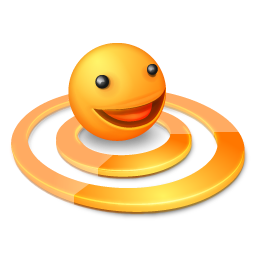 Frequently Asked Questions
Frequently Asked QuestionsThe intent of this section is to collect the quite numerous frequently asked questions that relate to working with Thunar. If you know of a question that is missing from this page, please file a request.
For security reasons Thunar only executes files of type application/x-desktop, application/x-executable and application/x-shellscript. For desktop files the execution feature will only be enabled if the desktop file is of type Application and a valid ExecLink and a valid URL is given. For the other types the feature is available if the file is marked executable for the current user.
line is given or of type
Also note that for application/x-executable and application/x-shellscript, the types of the file don't really need to match these types exactly, but it is suffice if the detected type has a parent that matches one of the two types listed above, or if the MIME-type is an alias for one of the above.
Thunar associates various settings with files/folders, which we call metadata. This metadata for all files is stored in tdb database file, which is called the metafile. The database file is stored in $XDG_CACHE_HOME/Thunar/metafile.tdb and can be examined using the tdbtool, which is part of the Thunar distribution (located in the tdb/ subdirectory).
Thunar stores the user configurable preferences (and hidden settings) in an .ini$XDG_CONFIG_HOME/Thunar/thunarrc and can be examined using a text editor. See docs/README.thunarrc for an overview of the various preferences. file, which is located at
Thunar currently features basic support for so called mouse gestures in its icon view. You can use these mouse gestures by holding down the middle mouse button (usually the mouse wheel) while the mouse pointer is on the background area of the icon view component (any area that is not covered by an icon or a text). Now you can move the cursor into four directions to perform certain actions, which are described below.
| Left - opens the previous visited folder |
| Up - opens the parent folder |
| Right - opens the next visited folder |
| Down - reloads the current folder |
If you want to rebind a shortcut, Thunar supports the standard GTK+ way of changing shortcuts: simply hover over the menu option with the mouse pointer and press the keyboard shortcut you want to rebind it to.
To delete a keyboard assignment, press the Backspace key while you are on the menu entry.
If the shortcut doesn't change, then you need to enable the feature in GTK+. This can be achieved in 3 ways:
If you are running Xfce 4.3 or above then you can enable Editable menu accelerators in the User Interface Preferences dialog.
If you are running GNOME then you can enable Editable menu accelerators in the Menu and Toolbars control center dialog.
Otherwise put the following in your
~/.gtkrc-2.0file (create the file if it doesn't exist):gtk-can-change-accels=1
The custom keyboard shortcuts are stored in the standard GTK+ accel map format in a file located at $XDG_CONFIG_HOME/Thunar/accels.scm. Lines starting with ; are comments. See the GTK+ documentation for details about the file format.
If you are a packager or a system administrator and want to provide a system wide default for the keyboard shortcuts, that is different from the default shortcuts in Thunar, you can create a file Thunar/accels.scm in one of the $XDG_CONFIG_DIRS. For example, if /etc/xdg is part of $XDG_CONFIG_DIRS (the default for most Linux distributions), you can install system wide defaults to /etc/xdg/Thunar/accels.scm. Thunar will then load shortcuts from this file on first startup.





0 commenti:
Post a Comment